Moving Wider Tiny Homes is No Big Deal
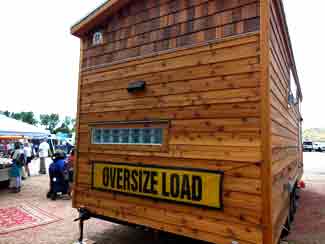 If you’re interested in tiny homes on wheels (THOWs), then one of your greatest desires is probably the ability to pull up stakes and move your home. We’ve already covered the basics of towing a tiny home. If you’re hoping to build or buy something bigger, walk with us for a moment outside the parameters of the traditional box.
If you’re interested in tiny homes on wheels (THOWs), then one of your greatest desires is probably the ability to pull up stakes and move your home. We’ve already covered the basics of towing a tiny home. If you’re hoping to build or buy something bigger, walk with us for a moment outside the parameters of the traditional box.
Moving tiny homes wider than eight feet is no big deal. Tiny homes on wheels can be wider than eight feet, but builders limit the width so you won’t need to deal with oversize load permitting if you move your home.
For those who tow their home a lot, like Alexis Stephens & Christian Parsons, getting permits, signs, and lighting would be a major inconvenience. However, most of us will only move our tiny homes once or twice in our lifetimes.
Imagine the hassle of needing permits every time you wanted to take your RV camping. It makes sense to keep these mobile vehicles under the eight foot wide limit. That’s why the slide out was invented: extra room in a temporary shelter. But more space in a structure for full-time living might be worth the occasional inconvenience and slight additional cost involved in the move.
See Traci Glidden’s Big Bliss, our Best Tiny House of 2021 Pick. It’s 10′ wide and fabulous.
The Extra Hassle of Moving a Wider Tiny Home is Worth The Extra Comfort Gained.
Having a little extra width will add a great deal of comfort, storage areas, and feeling of spaciousness to your tiny house. Just a couple extra feet will give you the ability to pass each other in the kitchen without inconveniencing the cook.
You’ll be able to add overhangs and rain gutters for the roof like a regular house. Tack on a fold-down patio without worrying.
Building your tiny home a little wider does not significantly increase the building costs. You’ll fret less about having well-insulated, six-inch thick walls instead of settling for four-inch walls, just to scratch out a few extra inches.
Specialty trailers for tiny homes are now available in ten and twelve foot widths, providing more options as you plan your buy or build.
Maximum height of 13.5′ still a good idea
The height limit of 13.5′ is still a good idea because most overhead wires and bridges are designed to be just above that height. Being over 13.5′ high would really cramp your travel route. It also requires a lot more safety equipment. I once saw a massive storage tank being towed, and they had a car out front with a long pole attached to the front bumper, measuring each overhead obstacle they encountered.
Again, we have great information on planning your routes on our original page, Towing Your Tiny Home Safely.
Most highways have 12′ wide lanes
Most major highways have twelve foot wide lanes. Many side roads are limited to only ten feet wide, and intersections don’t always allow for wide-radius turns. A route survey is sometimes required.
Oversize Load Permits
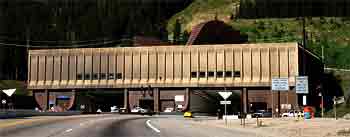
Photo from Wikipedia.com
Oversize Load Permits needed to move wider tiny homes are not expensive, but can be time consuming to obtain because each state has its own unique regulations and required permits.
The DOT in my home state, Colorado, has to consider obstacles like the Eisenhower tunnel. You also need to be aware of road hazards like rock slides that might be limiting the width of the road in certain areas. Don’t even think about taking that puppy over Independence Pass. I don’t care what Google Maps says. Not all roads are safe for moving wider tiny homes, but most are.
Oversize.io is a website that makes it easy to determine the permits and costs involved with a route you might need to take. This frequently updated website will also specify what type of signage and lighting is required, as well as provide easy permit applications.
Oversize Load Permits are not expensive
Most states charge between thirty and sixty dollars* for permits. The biggest expense would be the requirement of an Escort vehicle, but only a few states require that.
Times and Route Restrictions
Your permit will specify the route you must take through the state. It also specifies the times you can travel. These requirements are not super restrictive, but you do need to plan ahead.
The state might deny travel on certain holidays. They might require an Escort vehicle if you’ll be traveling at night.
Your route will be determined to be safe for a vehicle of the specified size. However, you need to be aware of weather conditions, like heavy snow, that might cause wires and branches to hang way lower than the minimum level.
Oversize Load Flags, Lights, Signs, Banners For Moving a Wider Tiny Home
Banner
Here is the safety banner you will need on the front of your tow vehicle and the rear of the load. They are only about $12.99* each.
Click on banner to order from The Home Depot.
Safety lights

These amber LED lights will fulfill the requirement for safety lights. You will need one on the cab, two or three on the back, and one on each corner. These Maxxima SDL-35Y Amber 3.50″ Round LED Battery Operated Emergency Flasher Light do not require special wiring as they run seventy five house on just three AA size batteries. They can be set to steady or strobe. $17.99* each.
Corner Flags
 These flags are usually required on front and back sides. These eighteen inch square flags are vinyl coated, blaze orange. A two pack costs under $5.00*. Click on image to order from The Home Depot.
These flags are usually required on front and back sides. These eighteen inch square flags are vinyl coated, blaze orange. A two pack costs under $5.00*. Click on image to order from The Home Depot.




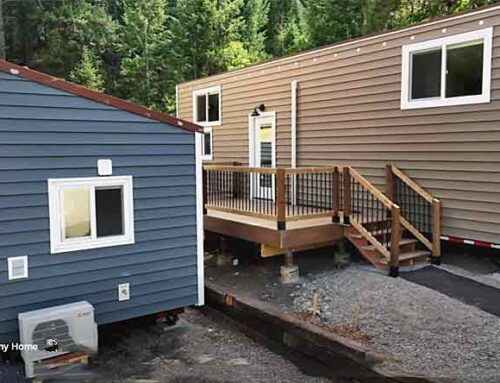
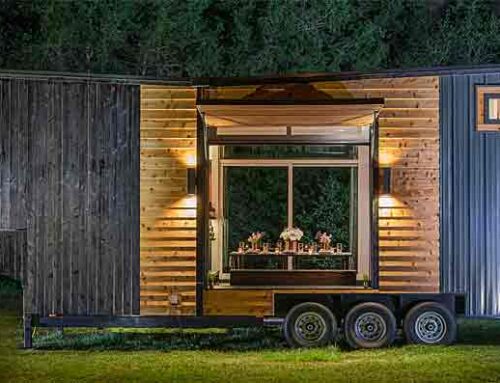
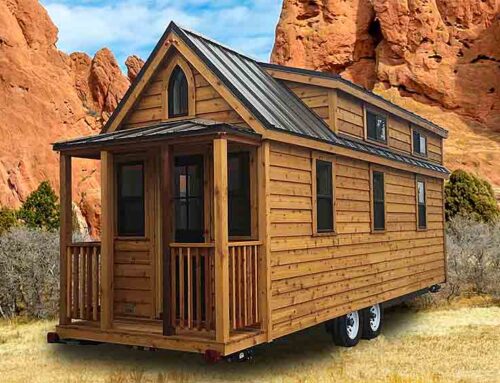
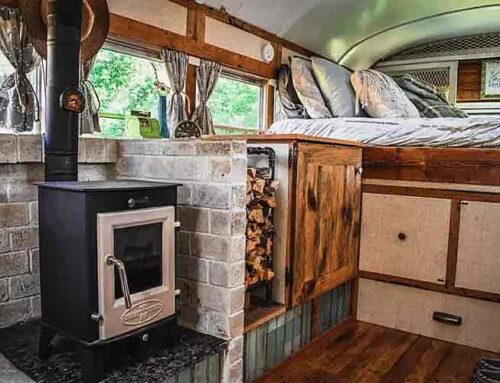
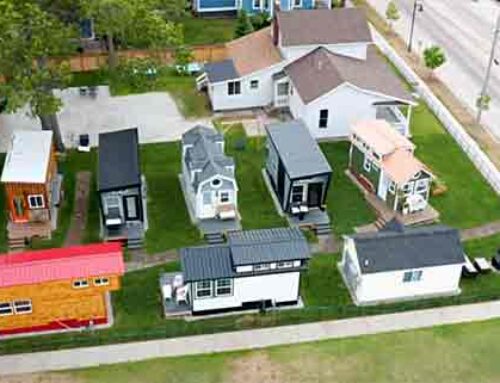
Hey that’s my house! 🙂 It traveled from Mitchcraft Tiny Homes in Fort Collins to Colorado Springs for a tiny house festival, where I assume you took this picture! Then, it moved to the ranch where I live in Northern Colorado!
Hi Lauren: Yes, I snapped the photo at the Peoples Tiny House Festival in Colorado Springs. I will take it down if you want but the smiley emoji makes me think yer ok with it. Nice looking abode too. Anyway, how wide is your tiny? 10? What did you use for your tow vehicle?